#Galician food
Note
¿Cuál es tu top 5 de comidas españolas favoritas? - danipedrosas-boatest
Hola Libby 👋👋👋👋.
No sabía que hablas Español y esto me ha pillado muy de sorpresa.
1- Las tapas. Es uno de los platos más típicos y es un conjunto de platos y que pueden variar de un sitio a otro 8incluso de un bar al de al lado). Básicamente las tapas son platos que se sirven anted de la comida o como primero. También se puede cenar de tapeo o hacer una comida completa con amigos así. Es muy versátil.

Las tapas más comunes son la rabas (puede ser un plato solo), calamares a la romana (puede ser un pl,ato solo), croquetas (mis favoritas son las de jamón serrano, que pueden ser también un plato completo), patatas bravas, anchoas en vinagre, aceitunas/olivas, ¡pero muchas más!
2- Crema Catalana. Es un un postre típico Catalan. Son natillas con una fina capa de azúcar caramelizado. Esta buenisino, pero por desgracia solo me gustan los que hacen en los restaurantes de comida típica Catalana.
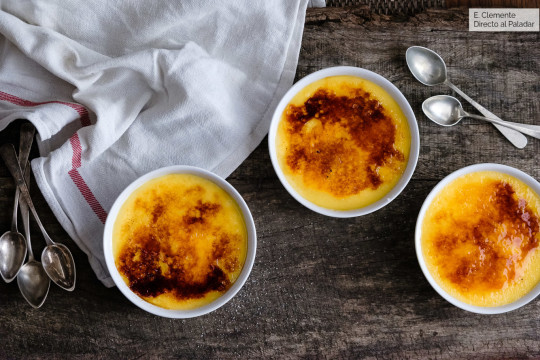
Para mi la mejor parte es golpear el azúca y escuchar como cruje y se rompe.
3- Torradas/Tostadas. Esto deriva de un plato Catalan típico que es el pa amb tomàquet (pan con tomate) que es pan tostado con tomate restregado (no en rodajas), aceite y sal.
las Torradas (en Catalan) es pan de pages tostado con embutido. puede o no llevar tomate. Mis favoritas son las de jamón (tanto dulce como serrano), queso y lomo.
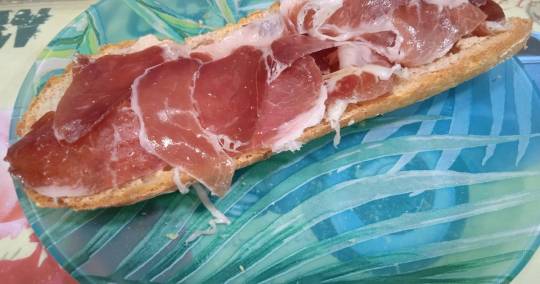
4- Pulpo a la gallega/pulpo a feira (en gallego). Que es pulpo cocido y servido en un plato de madera con a sin patata y con pimentón al gusto.

(Puede ser servido como tapas también).
5- Y como se acerca la semana santa, otro postre típico que también esta buenísimo. Las torrijas. Es pan duro del día anterior mojado en leche, a la qual se le da sabor con canela y la piel del limón, y luego frito. Una vez seco se añade azúcar con canela. Esta buenisimo.

Hay algunas variantes de esta receta donde se hace al horno o se sirve frito pero con leche. En alguna ocasion mi madre las ha echo con la piel de la naranja en vez del limón.
Honorable mencion a los canelones. Que si bien no es receta española, es una adaptación de una receta Italiana a los gustos Catalanes sel siglo XIX/XX, es uno de mis platos favoritos.
Ups creo que me ido un poco por la tangente.
4 notes
·
View notes
Text
All you Americans who complain about oatmeal/porridge as if it's the worst food in the world have clearly never heard of grelos

2 notes
·
View notes
Text

0 notes
Text
Astons Specialities brought back the Spanish Chestnut Pork (S$18.90+) with one dollar price difference. This chestnut fed pigs from the autonomous region of northwestern Spain is flavourful and so succulent juicy. Along with the price increase, they also stopped the apple sauce pairing and replaced with a generic brown sauce. :( Picked potato wedges and creamy coleslaw for my two sides to accompany the main course.
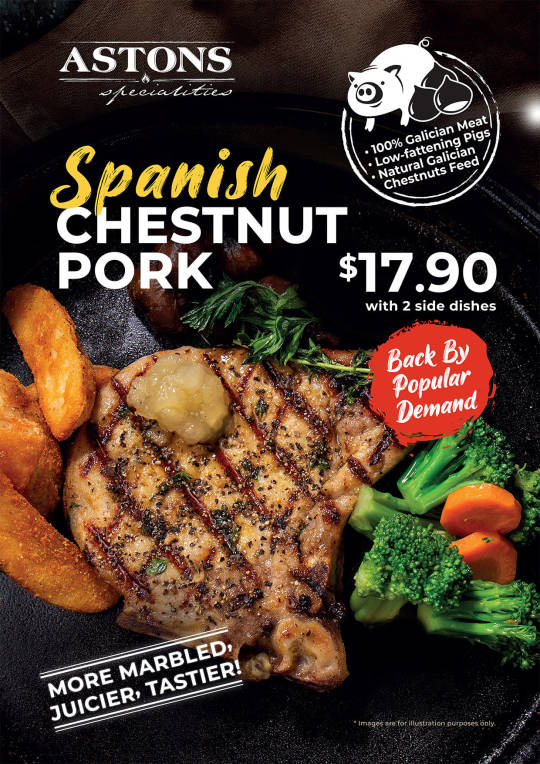

Topmost image courtesy of Astons Specialities.
#Astons Specialities#Sembawang Shopping Centre#Western#Spanish Chestnut Pork#Pork Chop#Galician Meat#Spain#Flavourful#Succulent#Juicy#Charred#Potato Wedges#Coleslaw#Brown Sauce#Restaurant#Dinner#Food#Buffetlicious
20 notes
·
View notes
Text
Tomino Taberna Gallega
First off, check out my Ride & Review video HERE:
My wife took me here for my birthday to try the Vaca Vieja (old dairy cow, popular in Spanish food). Here’s what we had:
Empanada with octopus and cheese inside. Really nice. The crust reminded me of pot pie dough.
Fried squid on a bed of fried zucchini. This was excellent!
Mussels with a pimento broth.
Wild mushrooms with sliced grapes and…

View On WordPress
#basque#food#foodporn#galician#gallega#rib eye#rib steak#ribeye#spanish food#steak#steaks#taberna#tapas#tomahawk#tomino#tomino taberna gallega#vaca vieja
6 notes
·
View notes
Text

2 notes
·
View notes
Text




The original building is located in Lviv, Ukraine. Rich Renaissance architectural forms combined with Baroque motifs are the main features of the building of the former Galician Savings Bank. The construction of the savings bank, managed by Zygmund Kendzerskyi, was completed in 1891. Since 1951, the building housed a museum, which today is the Lviv Museum of Ethnography and Art Craft.


The facades are decorated with rust made of broken stone, yellow brick, majolica, forged metal decorations, which were made by the Lviv factory of Piotrovich and Schuman. Attention is drawn to the large metal grills on the windows and the wrought-iron gate, made by the Lviv workshop of Jan Dashek.



The corner semi-cylindrical dome is decorated with Leonard Marconi's allegorical sculptural group "Frugality", symbolizing the economic progress of Galicia.





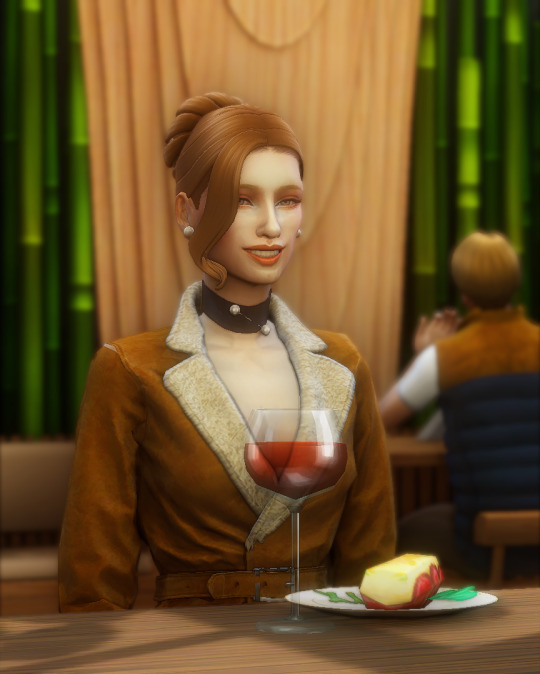


It's hard to believe but I didn't use any pose packs while making screenshots. I tested the gameplay and, surprisingly, sims sat down at the tables normally, and the waiters delivered the food and cleaned the dishes.



This moment was too funny to ignore it.

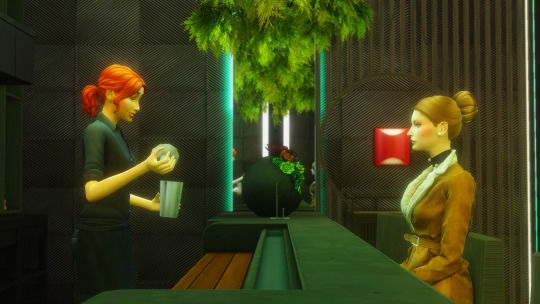
The rest of the restaurant is occupied by the bar, but sims hardly hang out there.



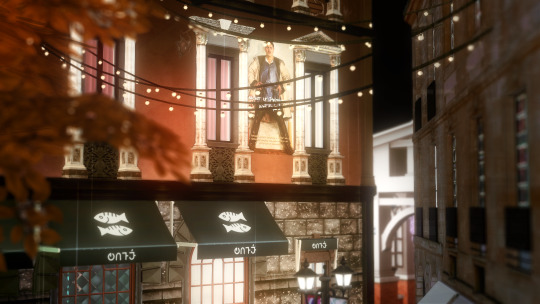
More info, screenshots and DOWNLOAD HERE (always free).
Custom content by @syboubou @felixandresims @thejim07 @lilis-palace @teanmoon @sims41ife @pinkbox-anye @blueteas @hydrangeachainsaw @annachibisims and others~
#sims#the sims 4#sims 4#ts4#simblr#sims 4 build#sims 4 historical#ts4 restaurant#sims 4 restaurant#sims 4 community#ts4 community lot#ts4 lot#my sims buildings
277 notes
·
View notes
Note
What differs a Bronze Age Monarchy from a Feudal or Modern State Monarchy? For whatever reson I have always been given the impression that Bronze Age Monarchy is the ancient version of either the former or the later, but that does not sound right.
Yeah, that would be a major misconception.
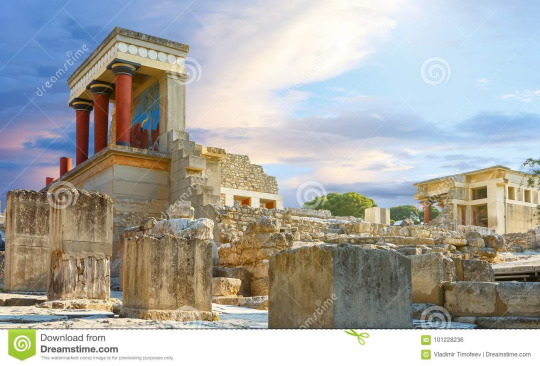
Bronze Age monarchies:
were far more centralized than medieval monarchies, with large, year-round palace complexes that functioned not just as fortresses but also as judicial centers, religious centers, storehouses, state planning apparati, and so on. To operate all these various functions, they employed a large bureaucracy that had, if not a monopoly, something of an oligopoly, on literacy, numeracy, and higher learning.
were highly involved in planning the economy, from organizing irrigation and other labor-intensive farming practices to keeping detailed records on production and taxation to coordinating the complex network of international trade that regulated the flow of both key commodities like tin but also luxury goods.
had more of a monopoly on military force, especially when it came to elite units like chariots. Training an archer and a driver to work in unison with a team of horses specifically bred to the task and custom chariots was a long and expensive process that only a monarch could provide the necessary surplus food and other resources for.
were not Christian. I can't stress enough how important this was as a structural force - Bronze Age monarchs did not have to deal with a large, European-wide, literate bureaucracy, with immense cultural power, that owned more land than they did. This isn't to say that there was no interaction between the temples and the state - I've talked recently about the tendency of Bronze Age monarchs to either be god-kings or priest-kings - but that the terms of interaction between the two much more heavily favored the state.
By contrast, medieval monarchies - and I'm aware that the term is something of a moving target, because what it meant to be a king in CE 600 is very different from what it means in CE 1100 or CE 1600 - were:
decentralized. They had small, peripatetic courts, and initially almost no bureaucracy. Governing power was much more broadly distributed down to the regional and local level through feudal contracts, and it was a long and very fraught process for the monarchs to gradually wrestle that power back.
much less engaged in the economy. Aside from tariffs and monetary policy, which is important, you don't really see medieval monarchs telling peasants when to plow and which fields (outside of the monarch's own personal fiefs), because that was an interference with the decentralized manorial system. You see fewer and smaller building projects, in no small part because the monarch usually couldn't afford to do them.
had less of a monopoly on violence. While the feudal exchange was supposed to give kings military service in exchange for land, in practice feudal levies could be slow to form, quick to disperse, and very fractious about their terms of service. This meant in practice that the nobility could exercise more hard power than their nominal overlords, which is why noble revolts were a common feature. Similarly, it took a long time for the monarchs to establish the necessary fiscal architecture for assembling professional armies and then eventually turning those professional armies into standing armies and then eventually turning those armies against the nobility - and by that point, we're not really talking about the Medieval period any more.
were Christian. And while there could certainly be exceptions of Emperors who picked Popes (instead of the other way around) or kings who could weirdly judo-flip their piety into Galician-style control of their national church, over time the pendulum definitely swung in favor of the Church having more power than any one monarch. They were wealthy, their wealth tended to grow over time because they were a corporate institution that invested their profits back into the company, they had huge amounts of cultural power, they had huge amounts of political power, and so on.
592 notes
·
View notes
Text


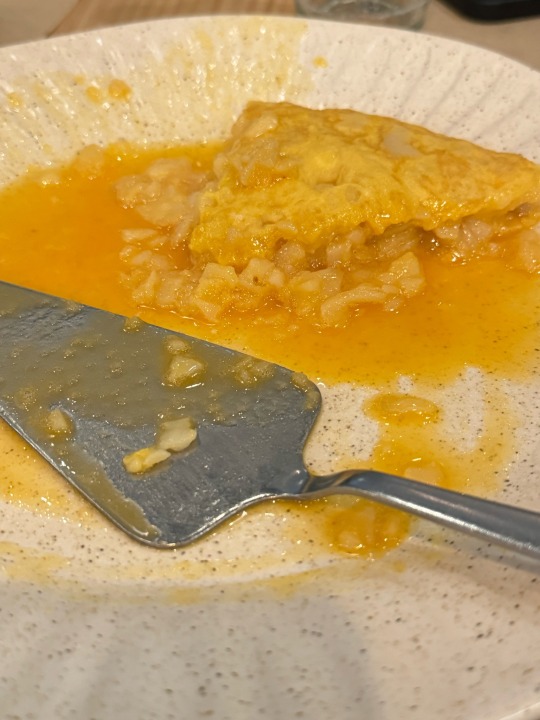
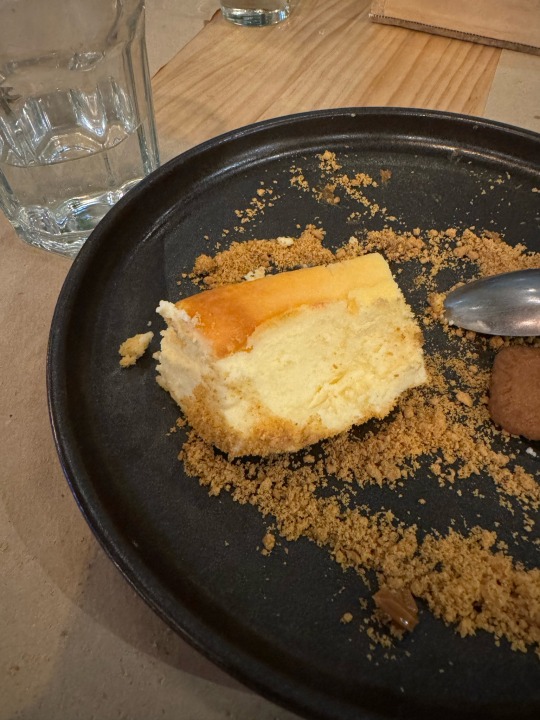
Workout and Galician food 🤌🏼😆 in the morning I am a person but in the night my healthy person leaves my body; 🥲🥲🥲 because today is the women day! 💙😻
HAPPY WOMEN DAY TO THE MOST BEAUTY CREATION IN THE WORLD 🌎😍❤️
#beauty#love#selfie#lovely#health & fitness#mirror#tumblr girls#black hair#galician#seafood#tortilla
15 notes
·
View notes
Text
A proper writeblr introduction

Hello people, you can call me Cosmo. I’m not a spacial doggy, no matter what the gossip says (I'm gonna turn this sentence in my new tagline). I have been around here for a while but I had never dared to do an introduction until now.
What can I say about me? I'm a Spaniard, my home is in Galician. I started to write in English to learn the language but I found out that I liked it.
I'm searching for other amateur writers. I'm really into urban fantasy, specially shapeshifters (you know, werewolves. I haven't gotten over Teen Wolf yet) and romance (with bi character is always better).
I have another blog for NSFW stories: @hotcosmo
My WIPS
Wolf Trip (My current WIP):
Senior year, the last chance to discover your true self before adult life. Jon was ready to enjoy it with epic plans: getting a spot on the basketball team, figuring out what university would be his new place the next fall, and of course, finding the absolute perfect prom date.
But, seriously, since when do the plans of a seventeen-year-old boy work out as expected? Instead of parties and dealing with his new status like one of the popular kids, Jon found himself facing the fact that he's not your average human anymore.
Romulo, the hot and strong young wolf who decided that Jon's essence was too irresistible not to spice up it with a little bite, had to deal with an emotional teen with a very aggressive newborn inside while they had to sprint across America to find a safe place where Jon can learn how to live in a world bigger than before. A world full of new creatures and magic where your position in the food chain may not be what you expected.
The Imperial Sorceress (complete):
Lady Dominica, High Sorceress of the Empire and the eldest of his coven, and his apprentice Ludovica have to confront a powerful semi-divine creature never seen before in imperial lands which is destroying the military forces of the empire and find out why the creature is helping the alliance of the Southern kingdoms to conquer the city of Lorencia.
Midnight rituals, season 1:
"A witch, a vampire, a werebear, and a human are in a clearing in the middle of a forest…"
This could be the beginning of a bad joke or of a riddle; however, the witch was summoning an ancient demon while the human tried to avoid it; the witch and the vampire were in love but they fight more than anything else, and the werebear, well, he is there being a very handsome guy and tried to no one ended up dead.
The peace of the small town of Santo Hills (Pennsylvania) is in danger and only the hardly credible team of four supernatural teenagers has some opportunity to avoid a massacre in the town.
Dylan, season 1:
"Do you know this feeling of whatever you do, you're going to fuck it? For me, it's not a feeling it's my day-to-day.
Hooking up with someone older, yelling at my social worker, or kissing a girl for whom I feel nothing is only a small part of my problems.
The big part is my powers which my family knows nothing about. Fuck, I don't know how I survive until graduation. I should talk to them, should I?
Ahhh, fucking l…"
Malicious Wood:
"After Ragnarök, paradise emerged, Yggdrasil blossomed from its ashes, and a new pantheon was constructed, ushering in a new era. But time passed and nothing in this world was created to be at peace forever.
Asktré accompanied by his sons Lunnec and Fenrir, return home after an arduous and fruitless journey. Against Aktré's wishes, they are unexpectedly drawn into the investigation of a series of mysterious murders in Odinia, Midgar. Could an Ashman and two hybrids discover the truth behind these heinous crimes?
Malicious Wood serves as an enthralling introduction to New Yggdrasil a world base on Norse mythology post-Ragnarök where the delicate balance between Realms is starting to change. Can those born of an old world save a new one?"
#writeblr#writing#writers on tumblr#creative writing#writers#fantasy#books#writeblr community#writing community#writer things#introduction post#introductory post#lgtbq#cosmo-lexies#hotcosmo
8 notes
·
View notes
Note
top 5 spanish dishes
spanish omelette (here we call it potato omelette and the other one french omelette, of course). #1 comfort food for me, basically xD. simplicity in ingredients but reaaaaaaally easy to fuck up lol.
black rice. with aaaall the seafood.
speaking of, I do love pulpo á feira/a la gallega (galician style octopus).
gazpacho. basically a gold soup of tomatoes, red & green peppers, cucumber, onion, etc. my saviour in the summer.
crema catalana (catalan custard) is my favourite spanish-typical desert.
6 notes
·
View notes
Note
Galician queer is here.
I'm anxious af, and I'm sure that it's gonna happen. I'm trying to deny, I'm trying to convince myself, that I'm just overdramatic, but it doesn't work, just like on winter of 2022.
At summer, my window is open on ventilation 24/7, but not today.
I feel like that wagner spectacle was made up just for distraction from the current situation on the ZNPP
I don't know what to expect from the next few days or weeks, and I'm afraid.
Terror means fear, and the only thing they good at – spreading it through the world.
"To be a Ukrainian means to be constantly in a state of proving your right to exist." Volodymyr Vynnychenko.
I am probably one of those people who are so used to all this (which sounds terrible, "used to war") that the last thing that keeps me afloat is art as a process and a two-litre bottle of Coca-Cola. Of course, I can't say I'm ready to accept my death and turn into radiation dust. The worst thing is that my death will not be a reason to condemn russia and its citizens. People will continue to masturbate to the "russian aesthetic" and the red ties of the pioneers. Most people just don't like to hear about someone's mass death while sitting in sunny Florida (I'm just saying, no offence to Florida).
But we don't panic, we fill our cellars with first aid kits and food and don't worry, I hope there will still be a need for artists in the post-apocalypse)
more about ZNPP mining
6 notes
·
View notes
Text
Tagged by: @orla-mcool, thank you Giulia! ♡
Favorite time of the year: Summer
Comfort food: Galician dishes (octopus and soups mostly)
Favourite dessert: Churros
Things you collect: Cinema tickets
Favourite drink: Sangría
Favourite musician/band: Fernando Costa, Bad Gyal
Last song I listened to: Sin Señal — Quevedo
Last movie I watched: The last 365 Days film
Last series watched: Seinfeld (rewatch)
Currently watching: Modern Family (rewatch)
Current obsession: For the first time in forever I’m not obsessed with anything rn
Dream place to visit: I’ve always wanted to visit Australia idk why
Places you wanna go back to: Ibiza
Something you want: Idk. Too many things.
Currently working on: Getting used to my new routine now that summer’s over (I’m still not used to that)
Tagging: @arthurpendragonns @katherineebishop @nicknellsons @penelope-garcia @spookys @usergamora
2 notes
·
View notes
Photo

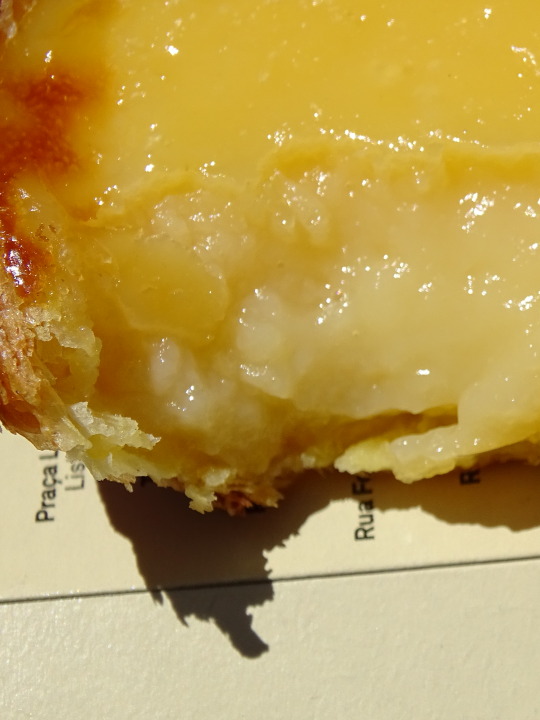
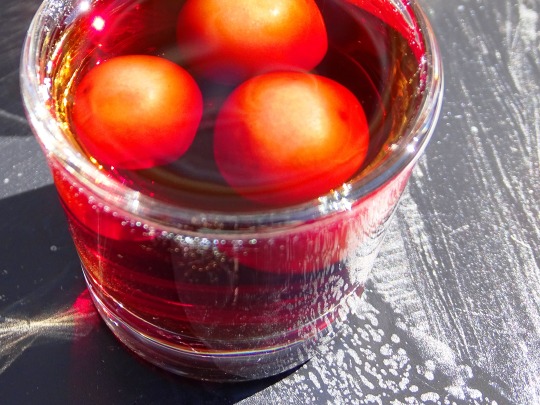

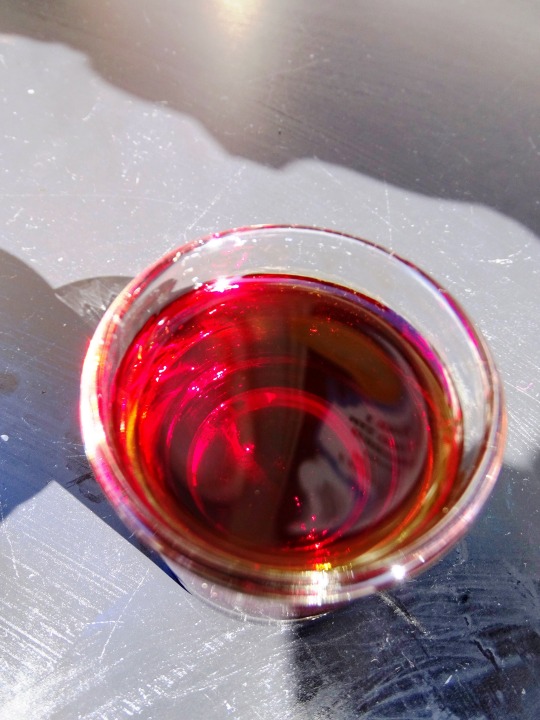
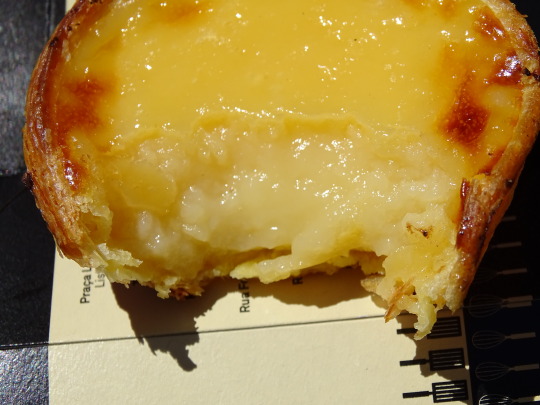




Food And Drink in Lisbon (No. 2)
Ginjinha or simply Ginja, is a Portuguese liqueur made by infusing ginja berries (sour cherry, Prunus cerasus austera, the Morello cherry) in alcohol (aguardente) and adding sugar together with other ingredients, with cloves and/or cinnamon sticks being the most common. Ginjinha is served in a shot form with a piece of the fruit in the bottom of the cup. It is a favourite liqueur of many Portuguese and a typical drink in Lisbon, Alcobaça, Óbidos, Marvão, Covilhã and Algarve. The Serra da Estrela ginja, centered around Covilhã, has protected designation of origin.
The Ginjinha of the Praça de São Domingos in Lisbon was the first establishment in that city to commercialize the drink that gives its name to it. A Galician friar of the Church of Santo António, Francisco Espinheira, had the experience of leaving ginja berries in aguardente, adding sugar, water and cinnamon. The success was immediate and Ginjinha became the typical drink of Lisbon. In the 2000s, the business was in the hands of the fifth generation. Around 150,000 litres of Ginjinha are produced each year, around 90% is consumed in Portugal and only around 10% is exported, the majority of it to the United States. The traditional liqueur is served all around Portugal, but is especially prominent in the Oeste and Lisbon regions.
Source: Wikipedia
#Ginjinha Espinheira#Portuguese liqueur#ginja berries#sour cherry#Morello cherry#Pastel de nata#pastéis de nata#bakery#bar#street food#don't drink and drive#original photography#Lisboa#Lisbon#Portugal#cityscape#tourist attraction#landmark#architecture#Lemon Black Tea#drinking#vacation#travel#Southern Europe
3 notes
·
View notes
Text
Tag game
Tag people you want to get to know better
I was tagged by @elvensorceress (*¯︶¯*)
relationship status: Single but not alone (´。• ᵕ •。`)♡
favorite color: Red, Black and Purple (☆ω☆)
favorite food: Polbo á feira (Galician octopus) (^.~)☆
song stuck in my head: "Shout it out” by BoA (Maybe because it's the one I’m listening right now xD)
last thing i googled: Something about podcasts or something like that, I don’t remember hahaha (⌒_⌒;)
time: 23:35
dream trip: Japan, I would like to travel to a thousand places, but that is the top1
Tagging @hard-candy-31-blog , @aserendipitousworld , @gemsbeatsoul or @gemsisbored and @cosicas-cuquis
2 notes
·
View notes
Text
Things You Probably Didn't Know About France
When visiting tour de france , there are many things that you probably didn't know about France. This article is full of interesting information to help you improve your knowledge about this beautiful country.
What is France?
France is a country in Western Europe. It is bordered by Belgium to the north, Germany to the east, Switzerland to the south, and Italy to the west. The Mediterranean Sea lies to its south and west. France has a population of approximately 66 million people. The official language is French, but there are also several other languages spoken in France, including Arabic, Berber, Basque, Breton, Catalan, Corsican, Danish, Dutch, English, Esperanto, Finnish, Frisian, Galician, German, Greek, Haitian Creole (Kreyòl Ayisyen), Hungarian, Icelandic (Íslenska), Irish (Gaeilge), Italian (Italia), Japanese (日本語), Jewish (Yiddish), Latvian (Latvijas), Lithuanian (Lietuvos), Luxembourgish (Luxemburgish), Malagasy (Malagasy), Maltese (Malta il-Għandha), Norwegian Bokmål (Norsk bokmål), Portuguese (Português Brasileiro), Romanian (România), Russian (Русски
France Milestones
1. The French Revolution began in 1789 and lasted until Napoleon Bonaparte was overthrown in 1815. 2. The French Revolution was a time of great change and upheaval in France. King Louis XVI was forced to give up power to the people, and the king's powers were transferred to the National Assembly. 3. The National Assembly created the French Constitution, which stated that all citizens were equal before the law and that the nation was based on the rule of law. 4. On July 14, 1792, the National Convention proclaimed the French Republic, which made France a republic instead of a monarchy. 5. During the French Revolution, people rose up against the monarchy and tried to create a more democratic society. This led to many changes, including new laws and rights for women and minorities. 6. The French Revolution also led to wars with other countries, including Britain, Austria, Prussia and Spain. In total, France lost about 5 million people as a result of these wars. 7. Napoleon Bonaparte became emperor of France in 1804 after he won several battles against his enemies. He ruled France for 18 years before he was overthrown in 1814. 8
French Culture
1. The French are renowned for their love of food, and there are many mouth-watering dishes to be found on restaurant menus all over the country. from rich foie gras and lobster dishes to home-made crepes and flatbreads, there is something for everyone to enjoy. 2. The country's rich history is evident in its monuments and architecture, everything from the stunning Notre Dame Cathedral in Paris to the medieval villages of Provence. 3. France is home to a host of world-renowned festivals, including the Cannes Film Festival, which is known for its glamorous red carpet arrivals and award ceremonies, as well as the famous Fête de la Musique music festival in Paris. 4. The country's natural beauty is also well worth exploring, with stunning countryside dotted with picturesque villages and impressive mountain ranges. Whether you're looking for sandy beaches or misty forests, France has something to offer everyone who visits.
The French Lifestyle
-The French are some of the most punctual people in the world. -It is customary for French people to give small gifts, such as flowers, to others on special occasions. -In France, it is considered rude to not say "thank you" when someone offers you a gift. -Paris is known for its lively nightlife and its many restaurants and cafes. -The French are also avid bicyclists, often cycling around town or touring large parts of the country.
France's Artists, Writers and Musicians
France is home to some of the world's most renowned artists, writers, and musicians. From painter Vincent van Gogh to singer Charles Aznavour, France has a rich history in art and music. Here are five things you probably didn't know about France's rich cultural heritage: 1. Jean-Paul Sartre was one of France's most famous philosophers. He is known for his work on existentialism and his novels "Being and Nothingness" and "Nausea." 2. One of the most iconic pieces of French art is the Mona Lisa. It is said that Leonardo da Vinci painted it between 1503 and 1517. 3. The Louvre Museum is the largest museum in the world and houses over two million works of art. 4. The Academie Francaise is the official body that protects French culture and language. It was founded in 1635. 5. Charles Aznavour was one of France's most famous singers. He received five Grammy Awards and has sold over 220 million records worldwide.
Paris: The City of Love
1. Paris is one of the oldest and most visited cities in the world. Over 2 million tourists visit Paris each year. 2. The Eiffel Tower is the most recognizable landmark in Paris. It was built for the World’s Fair in 1889 and originally stood at 1,063 feet tall. Today, it stands 1,569 feet tall and is one of the world’s most popular tourist destinations. 3. The Louvre Museum is home to some of the world’s most famous art treasures, including paintings by Leonardo da Vinci, Michelangelo, and Rembrandt. 4. Notre Dame Cathedral is one of the largest churches in the world and is on UNESCO’s World Heritage List. It was built between 1163 and 1250 and features some of the most intricate architecture in France. 5. The Palace of Versailles is one of France’s most iconic palaces and was once home to King Louis XIV and his many wives. Today, it is a museum open to the public that features opulent furnishings from the 17th century period.
2 notes
·
View notes